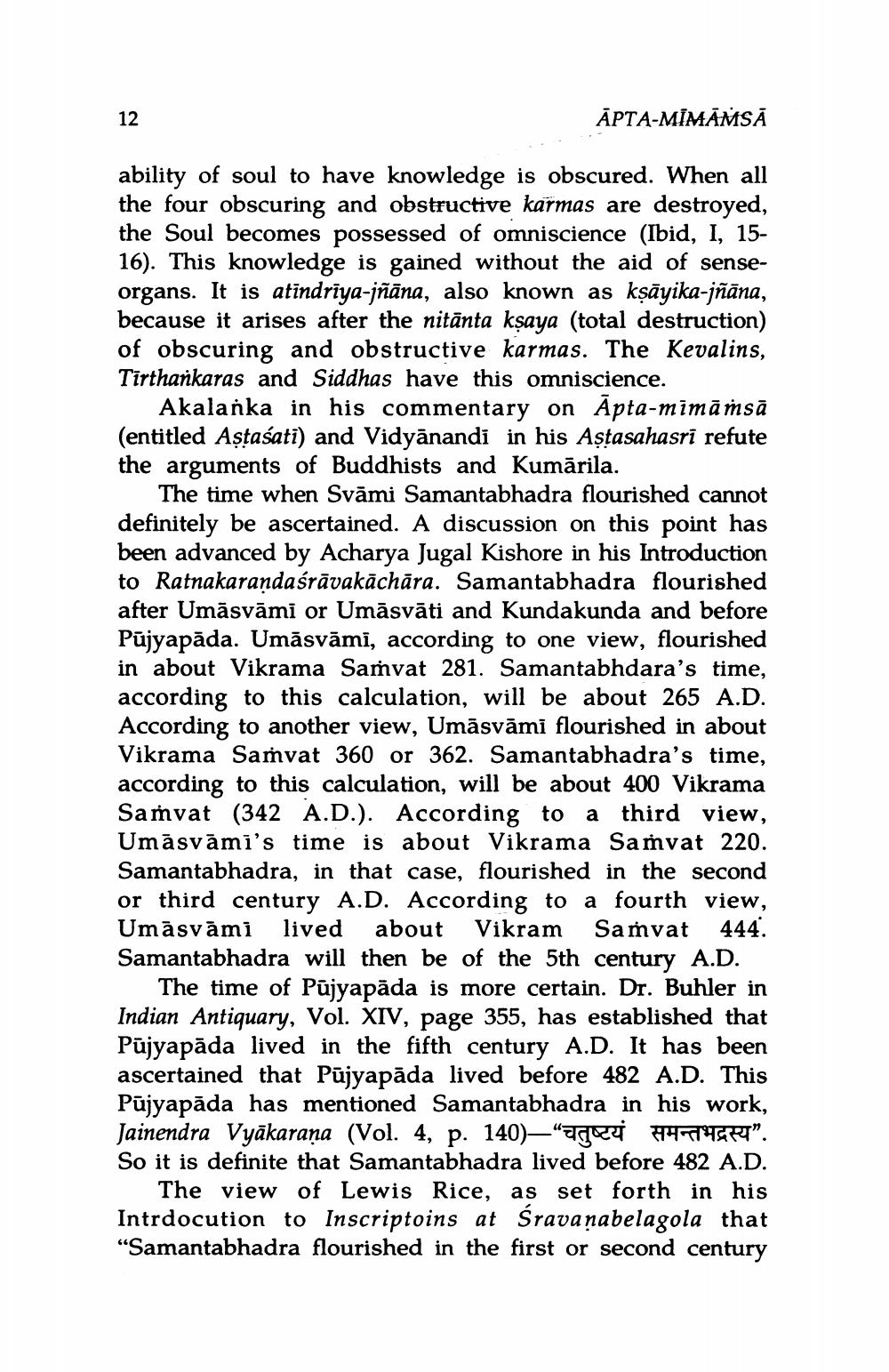________________
12
ĀPTA-MĪMĀMSĀ
ability of soul to have knowledge is obscured. When all the four obscuring and obstructive karmas are destroyed, the Soul becomes possessed of omniscience (Ibid, I, 1516). This knowledge is gained without the aid of senseorgans. It is atīndrīya-jñāna, also known as kṣāyika-jñāna, because it arises after the nitānta kṣaya (total destruction) of obscuring and obstructive karmas. The Kevalins, Tirthankaras and Siddhas have this omniscience.
Akalanka in his commentary on Apta-mimāṁsā (entitled Astasati) and Vidyānandi in his Aṣṭasahasri refute the arguments of Buddhists and Kumārila.
The time when Svāmi Samantabhadra flourished cannot definitely be ascertained. A discussion on this point has been advanced by Acharya Jugal Kishore in his Introduction to Ratnakarandaśrāvakāchāra. Samantabhadra flourished after Umāsvāmi or Umāsvāti and Kundakunda and before Pūjyapāda. Umāsvāmi, according to one view, flourished in about Vikrama Samvat 281. Samantabhdara's time, according to this calculation, will be about 265 A.D. According to another view, Umāsvāmi flourished in about Vikrama Samvat 360 or 362. Samantabhadra's time, according to this calculation, will be about 400 Vikrama Samvat (342 A.D.). According to a third view,
Umāsvāmi's time is about Vikrama Samvat 220. Samantabhadra, in that case, flourished in the second or third century A.D. According to a fourth view, Umāsvāmi lived about Vikram Samvat 444. Samantabhadra will then be of the 5th century A.D.
The time of Pujyapāda is more certain. Dr. Buhler in Indian Antiquary, Vol. XIV, page 355, has established that Pujyapāda lived in the fifth century A.D. It has been ascertained that Pūjyapāda lived before 482 A.D. This Pujyapāda has mentioned Samantabhadra in his work, Jainendra Vyakarana (Vol. 4, p. 140)—“ Hange”. So it is definite that Samantabhadra lived before 482 A.D. The view of Lewis Rice, as set forth in his Intrdocution to Inscriptoins at Śravanabelagola that "Samantabhadra flourished in the first or second century




